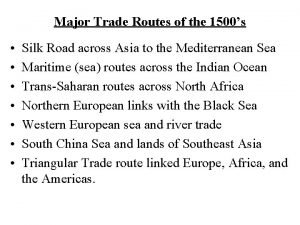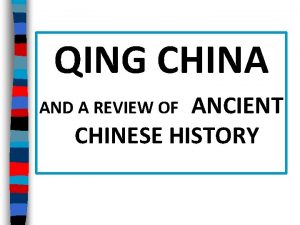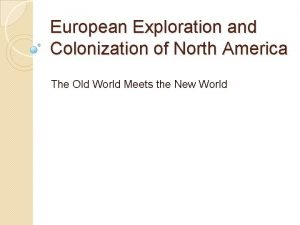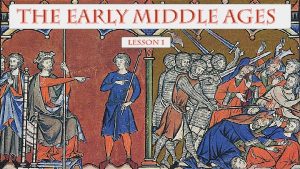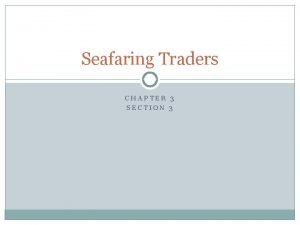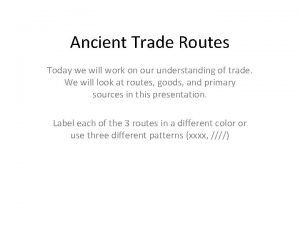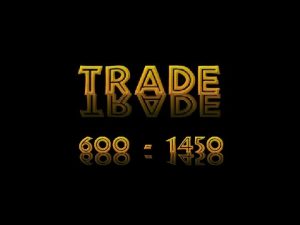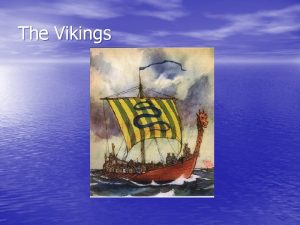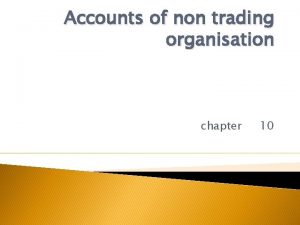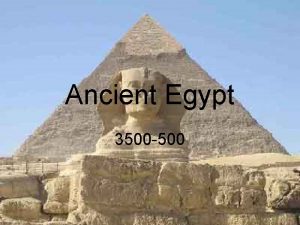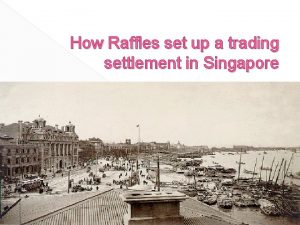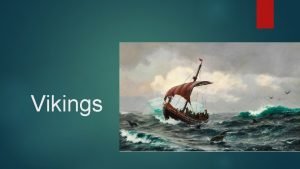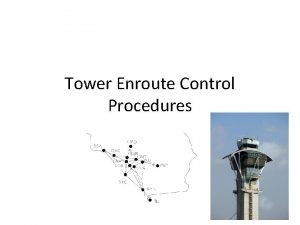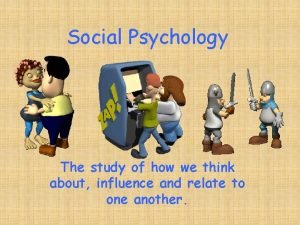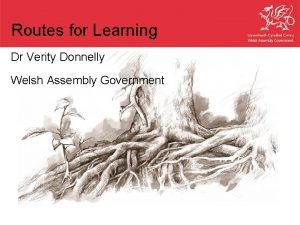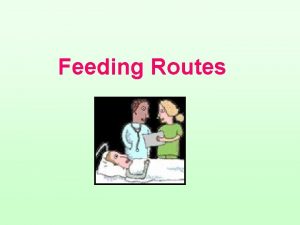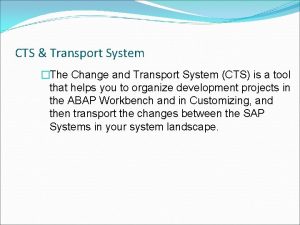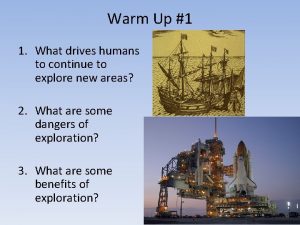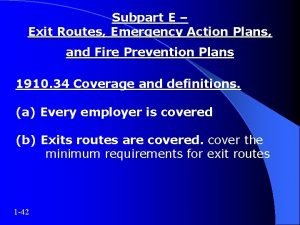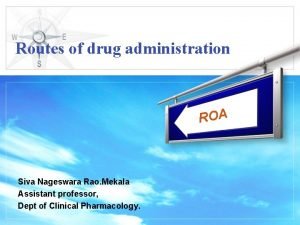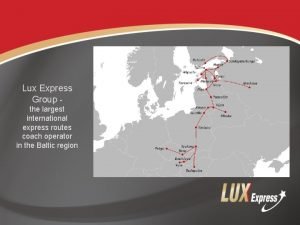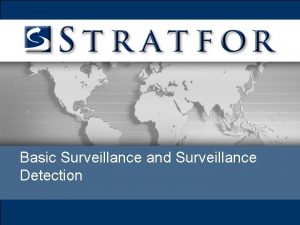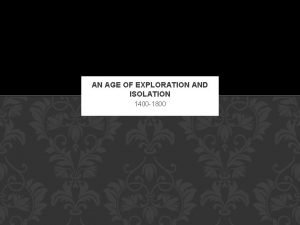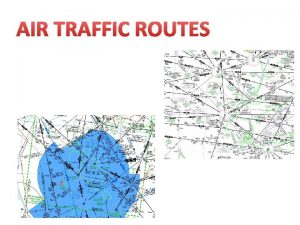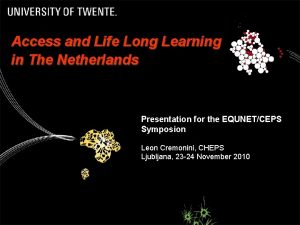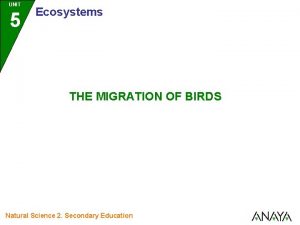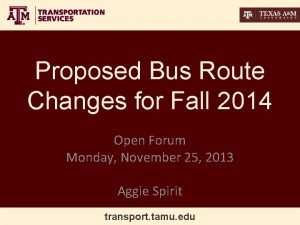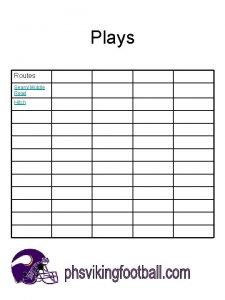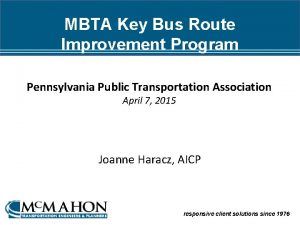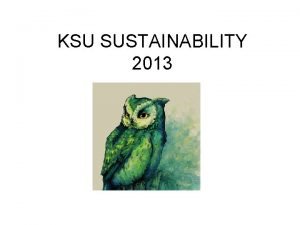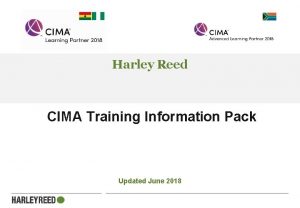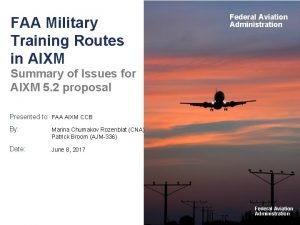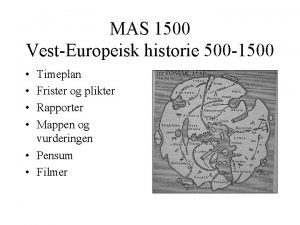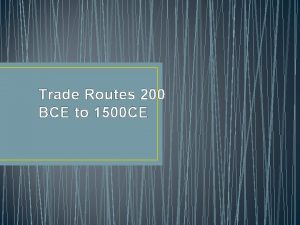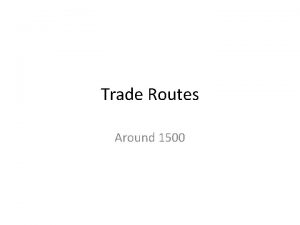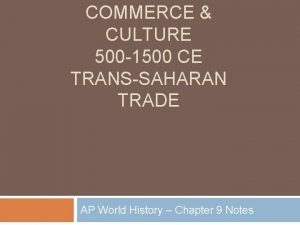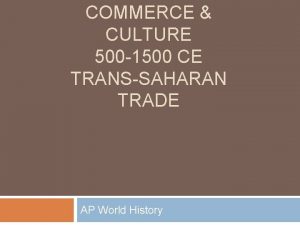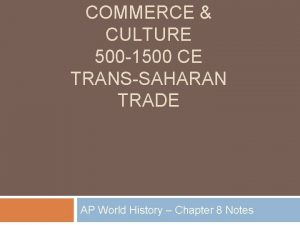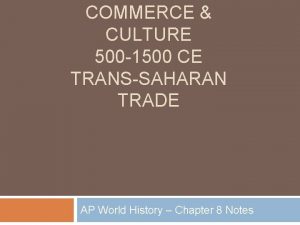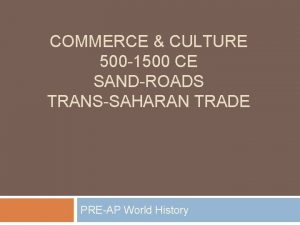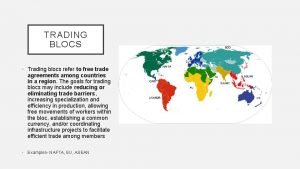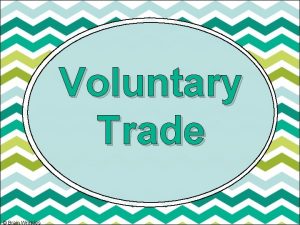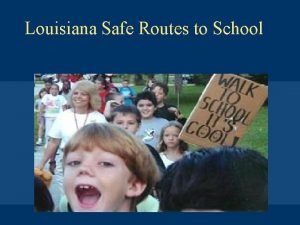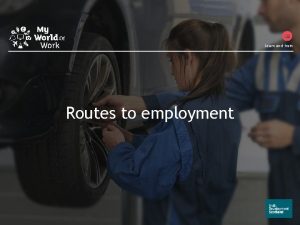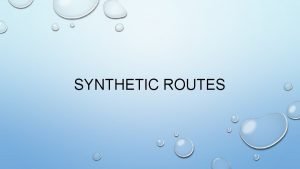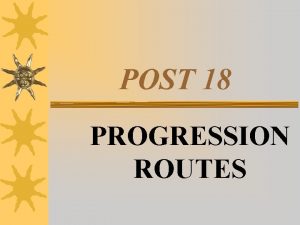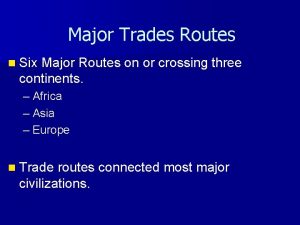Ch Trading Routes 500 1500 Why was trade

















































- Slides: 49

Ch. Trading Routes, 500 -1500

Why was trade significant?

Trade’s significance 1. Altered consumption 2. Encouraged specialization 3. Diminished economic self-sufficiency of local societies 4. Traders= a distinct social group 5. Social mobility 6. Goods for elites 7. Wealth from trade motivates state creation 8. Spread ideas, innovations, plants, animals, diseases

Trade • Very important!!! • The long distance trade= a feature of 3 rd wave civilization

What lay behind the emergence of Silk Rd. commerce? What kept it going for so many centuries?


Silk Road Emergence maintenance • The need to exchange products between Inner Eurasia ( harsh, dry climate) and Outer Eurasia ( agric. products b/c of warmer climate) • Demand for luxury-goods among the elites across Eurasia • Classical civiliz; Roman and Han Empires • 7 -8 C: Later empires: Byzantine E, Abbasid Caliphate • 13 -14 C: Mongol E.

When did the Silk Rd. prosper most? Why? • What luxury good symbolized the Eurasian exchange?

What made silk such a highly desired commodity across Eurasia?

Silk Rd. • Best times: when empires provided trade with security 1)Silk = Eurasian exchange system 2)In C Asia: currency • Silk : initially produced only in China • by 6 century C. E. produced by other peoples 3)Silk: symbol of high social status in China & Byzantine E. 4)sacred in Christianity & Buddhism

What were the major economic, social and cultural consequences of Silk Rd. commerce?

Silk Rd. impact Economic impact Social impact • Peasants in Yangzi River valley produced market goods( silk, porcelain) instead of crops • Well-placed individuals could make enormous profits

What traveled along the Silk Rd? What were the most important items traveling along the Silk Rd?

Traveling items • Goods: Silk, gemstones, metalwork, spices, pottery • Innovations: stirrup, mounted bowman, warfare chariot • Ideas and religions: Buddhism, Christianity, Zoroastrianism

Stirrups

What accounted for the spread of Buddhism along the Silk Road?

Spread of Buddhism • Merchants preferred Buddhism instead of Hinduism. Why? • Inhabitants of oasis cities along the Silk Rd. found in Buddhism a link to India’s prestige, resulted: conversions • Wealthy Buddhist merchants built monasteries that provided places of rest for Buddhist merchants ( during the journey)E. G. Buddhist texts at Dunhuang

How was Buddhism transformed during its spread?

Buddhism’s transformation • • It became Mahayana Buddhism Buddhist monasteries became rich Picked up Greek influence In China B. was the religion of foreigners

Caravanserai/Caravan

What was the impact of disease along the Silk Road?

Diseases • Contact led to peoples being exposed to diseases a)Smallpox & measles (Roman E and Han ) b) 534 -750: bubonic plague from India in B. E. c)Black Death: • Consequences: 1) 1/3 of Europ. Died 2) Survivors: better paid 3) Serfs & tenants: free peasants 4) Mongol E. collapsed

What advantages did the W Europeans get as a result of exchange of diseases along the Silk Road?

Positive conseq. 5) Death gave immunity to Europ. & advantage when they reached Americas in 15 -16 centuries.

What was the center of the Medit. Sea trade? What trade did the Medit. Sea control? What places did Medit. Sea link?

Medit. Sea trade • Center: Venice, by 1000 C. E. • Controlled trade of imports from Asia • Linked; Europe to I. Ocean trade

How did the operation of the Indian Ocean trading network differ from that of the Silk Rd?


Long-distance trade Indian Ocean Silk Rd. • Transportation cheaper(ships could accommodate larger cargoes) • Bulk goods • Rely on monsoons • Center: India • • More expensive Luxury goods only 4, 500 miles long Nobody traveled from one end to the other

saddle Camel saddle

What made the navigation easier? Who were partners of trade?

Indian Ocean trade • Monsoons • Towns, not countries were partners • Started: in the age of First Civiliz. • Increased in early centuries due to a better understanding of monsoons • The fulcrum of trade: India

What lay behind the flourishing of Indian Ocean commerce in the postclassical millenium?

The 2 factors the boost the I. O. trade 1. The econ. & polit. revival of China during the Tang & Song dynasties ( China=market for I. O. goods China provided the tools for navigation: magnetic compass & larger ships) 2. Rise of Islam in the 7 th century a) Islam –friendly to trade b) Arab Empires –from Atlantic O. to India c) Conversion to Islam made trade easier d) By 1, 000 C. E. internat. maritime culture

Indian Ocean trade/Medit. trade �Indian Ocean & China Sea �Over the entire ocean �Ships: pierced, tied, caulked (bitumen) �Covered larger distances �No polit. ties with their homelands �Lower volume of trade than Mediterranean (no islands, long distances) �No kingdoms maritime oriented • Mediterranean Sea • Seamen: rarely sailed far from shore • Nailed the vessels together • Colonies-contact with their home cities • Populations-maritime oriented

What changes did the Sea Rd. produce? What states rise to power due to the Indian O. trade?

Changes in SE Asia 1)Political changes 2) Foreign religious ideas 1 A )Malay kingdom of Srivijaya-670 -1025 C. E. • its resources: gold, access to spices, taxes on ships • Beliefs: chiefs have magic powers, it became a Buddhist center

Changes in SE Asia 1 B )Sailendras kingdom (Java) 8 -9 centuries: Hindu & Buddhist centers C) Burma, Khmer, Angkorshow infl. from Indian culture

What changes were in E Africa? ( as a result of the I. O. trade? )

E Africa Swahili civiliz. Location: E Africa, 1000 -1500 C. E. Blend of Bantu with commercial life of I. O. Polit. org. : indep. city-states Econ. org. : deep particip. in the I. O. trade Trade’s motivation: growing demand for E African prod. • Relig. Islam • Conseq. trade with the interior of Africa for gold led to the emergence of Great Zimbabwe • • •

What was the motivation of trans-Saharan trade? What was a turning points for this trade?

Trans-Saharan trade 300 -400 c. e. • N Africa: manufactured goods • Sahara: copper, salt, dates • Sub-Sahara: crops, gold • W Africa: gold, ivory, slaves • E Africa (Sudan): trade for horses, cloth, dates, salt • Urban clusters: along Niger River, Jenne-jeno • Key-point: introd. of the camel


Trans-Saharan trade • Conseq. : emergence of new states-Ghana, Mali, Songhay, Kanem, Hausa city –states • All rich • Polit. Org. : monarchies • Many slaves in W Africa • Initially most slaves women, later men

What limited the long –distance trade in Americas?

What was the “loosely interactive web” from G. Lakes to the Andes?


American web trade • Centers: Cahokia, Chaco canyon • Amazon & Orinoco had exchange networks • Chincha people-trade along Pacific coast • What was the difference between the trade practiced in the Aztec and Inca Enpires?

Mesoamerican trade • Maya, Teotihuacan trade by land • Maya-by sea, on both coasts • Aztecs had profes. merchants( pochteca) • Inca: trade run by state( 15 century)
 Trade routes in the 1500s
Trade routes in the 1500s Trans saharan trade route
Trans saharan trade route Trade routes in the 1500s
Trade routes in the 1500s Ming dynasty trade routes
Ming dynasty trade routes Age of exploration trade routes
Age of exploration trade routes Why did constantinople become a rich and powerful city
Why did constantinople become a rich and powerful city Chapter 3 section 3 seafaring traders answer key
Chapter 3 section 3 seafaring traders answer key Camel saddle ap world history
Camel saddle ap world history Persian empire trade routes
Persian empire trade routes Gupta empire trade routes
Gupta empire trade routes Triangular trade routes apush
Triangular trade routes apush Vikings exploration map
Vikings exploration map Byzantine empire feudalism
Byzantine empire feudalism Why why why why
Why why why why Meaning of non trading concern
Meaning of non trading concern 3500/500
3500/500 Dont ask why why why
Dont ask why why why How raffles set up a trading settlement in singapore
How raffles set up a trading settlement in singapore Trade diversion and trade creation
Trade diversion and trade creation Umich
Umich Trade diversion and trade creation
Trade diversion and trade creation The trade in the trade-to-gdp ratio
The trade in the trade-to-gdp ratio Fair trade not free trade
Fair trade not free trade Trade diversion and trade creation
Trade diversion and trade creation Liner shipping and tramp shipping
Liner shipping and tramp shipping Ted talk slave trade
Ted talk slave trade Viking whiteboard
Viking whiteboard Tower enroute control routes
Tower enroute control routes Central route persuasion example
Central route persuasion example Routes for learning map
Routes for learning map Routes of feeding
Routes of feeding Transport routes in sap
Transport routes in sap Central and peripheral routes to persuasion
Central and peripheral routes to persuasion Dutch exploration routes
Dutch exploration routes 1910 subpart e
1910 subpart e Local route of drug administration
Local route of drug administration Advantages and disadvantages of drugs
Advantages and disadvantages of drugs Lux express group
Lux express group Parenteral route
Parenteral route Hostile surveillance techniques
Hostile surveillance techniques An age of exploration and isolation
An age of exploration and isolation Preferred ifr routes
Preferred ifr routes Kennis learning routes llp
Kennis learning routes llp Ducks migrating
Ducks migrating Trigon tamu
Trigon tamu Double move routes
Double move routes Mbta key bus routes
Mbta key bus routes Prillaman hall ksu
Prillaman hall ksu Cima gateway route
Cima gateway route Military training routes
Military training routes
